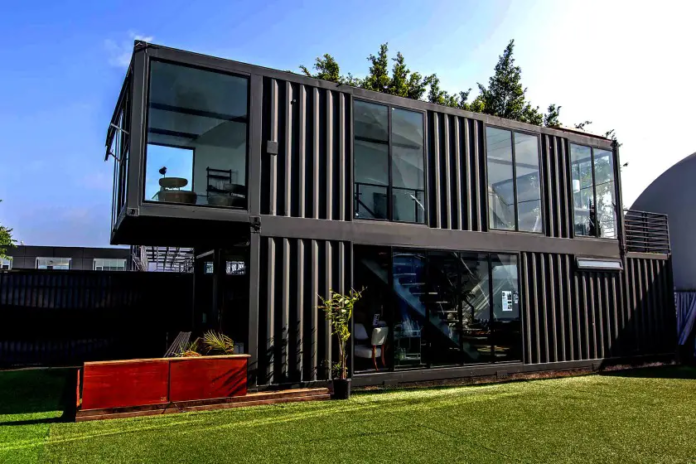Shipping container homes have become a trendy and intriguing housing option in recent years. Their sleek, industrial aesthetic and potential for sustainability have captured the imagination of architects, designers, and homeowners alike. But before you jump ship (pun intended) and start customizing your own metal box, it’s crucial to weigh the shipping container homes pros and cons carefully.
Pros: Setting Sail for Savings and Sustainability
Budget-Friendly Voyage:
Building a shipping container home can be significantly cheaper than traditional construction methods. Used containers can be purchased for as little as $2,000, and their modular nature reduces labor costs. Additionally, the inherent strength of steel minimizes the need for additional structural support.
Eco-Conscious Cruise:
Reusing shipping containers gives them a second life, diverting them from landfills and reducing the environmental impact of steel production. Opting for recycled containers further amplifies the sustainability factor.
Speedy Shipyard:
Compared to traditional builds, shipping container homes can be assembled much faster. The prefabricated nature of the containers allows for quicker completion times, sometimes within a few weeks!
Durable Docking:
Shipping containers are built to withstand harsh weather conditions and rough seas. Their sturdy steel construction makes them resistant to fire, pests, and even earthquakes, offering peace of mind to homeowners.
Creative Compass:
The boxy shape of shipping containers may seem like a limitation, but it actually unlocks a world of creative possibilities. Architects and designers have reimagined these metal boxes into stunning homes of all shapes and sizes, incorporating multiple containers, adding decks and balconies, and playing with interior layouts to create unique and personalized spaces.
Cons: Navigating the Rough Seas of Challenges
Size Restrictions:
Let’s face it, a standard shipping container isn’t exactly spacious. At 8 feet wide and 8.5 feet tall, claustrophobia can become a real concern, especially for families or those who crave ample living space.
Permitting and Zoning:
Building codes and regulations regarding shipping container homes can vary widely depending on your location. Navigating the permitting process can be complex and time-consuming, so consulting with local authorities is crucial before setting sail on your container home project.
Thermal Considerations:
Steel conducts heat and cold readily, making temperature control in shipping container homes a challenge. Proper insulation and ventilation systems are essential for year-round comfort, adding to the overall construction cost.
Interior Design Dilemmas:
The smooth, bare metal walls of a shipping container offer little in terms of natural warmth or acoustic dampening. Creative solutions like wood paneling, rugs, and strategic furniture placement are necessary to create a cozy and inviting interior.
Hidden Costs:
While the initial cost of the container itself might be low, additional expenses like modifications, insulation, plumbing, electrical work, and interior design can quickly add up, potentially negating the initial cost advantage.
Ultimately, the decision to build a shipping container home is a personal one. Weighing the pros and cons carefully, understanding your budget and local regulations, and seeking professional guidance are essential steps in ensuring a smooth and successful journey. Remember, a shipping container home can be a fantastic adventure, offering a unique, sustainable, and potentially cost-effective housing option. But like any voyage, it’s best to be prepared for both calm seas and occasional storms.
Also Read : The Importance of Hiring a Real Estate Attorney in a Managed Title Company
Bonus Tip: If you’re curious about experiencing a shipping container home before committing to building one, consider renting one for a vacation or short-term stay. This can give you a firsthand feel for the living space and potential challenges before making a significant investment.

